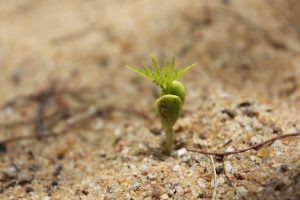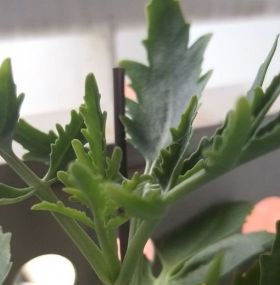Gardening FAQ #25 – What You Need To Know
In this article, we share what impact germination, how to apply fertilisers and much more. Let’s go through the common gardening FAQ, problems and solutions you need when growing your plants either indoor and outdoor.
Germination depends on seeds, conditions – a common question in gardening FAQ

I received black sunflower seeds in Hokkaido last year. I read that they can be grown directly in the soil. I have tried to germinate two seeds on moist tissue for six days, but nothing has sprouted. I live in a high-rise flat and have pot space and sunlight near the lift. How do I grow the seeds?
When seeds do not germinate, one of the most common reasons could be that they are not fresh and hence not viable.
Seeds have a lifespan and most species need to be sown fresh to ensure germination.
Another reason could be non-ideal seed germination conditions. If you are using tissue paper, ensure that it is neither too wet nor dry as either condition can impede germination. The tissue paper should be moist – not dripping wet – and be placed in a covered container to prevent it from drying out.
Finally, sunflowers can be challenging to grow in high-rise apartments. They require large pots – one plant should be grown in a pot of at least 30cm in diameter and get at least six hours of direct sunlight. Small pots and the lack of sunlight will result in weak and scrawny plants that produce rather small flowers.
If you want to do such transplant easily, you should explore using grow bags. See my other post on grow bags. Or another alternatives is to consider using raised garden kits. You can read our guide on using raised garden kit for more information.
Below is a short 2.5 minutes video on how to grow sunflower at home in 8 days.
Follow the manufacturer’s instructions when applying fertilisers

I never know when the right time is to fertilise my potted plants and fruit trees. Do I fertilise after the rain or when it is hot and sunny, or when the plants are bearing buds and about to flower or after they have flowered? How often should I fertilise my plants and how much fertiliser should I use?
The amount and frequency to feed your plants should be done with reference to the manufacturer’s instructions on the fertiliser’s label as well as your plant’s size and vigour.
You can use less for a start because too much will result in fertiliser burn. Excess fertilisers can be leached away during rain or watering which leads to wastage.
You can apply the fertiliser during fair weather as rain can wash away its water-soluble portion. Apply the appropriate fertiliser just before the stage of growth that you wish to promote.
If you want to grow this better under control lighting, you can consider using a grow light. Read up my post on growing lights fixture where I show you the top 4 things you need to know.
Succulent plant is likely the Christmas Tree Plant
 What is the name of this plant? Is it a medicinal herbal plant? If so, what are its uses?
What is the name of this plant? Is it a medicinal herbal plant? If so, what are its uses?
With sparse morphological details seen in the picture, the plant may be the Christmas Tree Plant. Its botanical name is Kalanchoe laciniata.
The plant grows as a succulent that shows some drought tolerance. Its leaves and growth habit make it an attractive plant to grow. Its leaves have been reported to be used in traditional medicine and valued for their anti-inflammatory properties.
Do not attempt to self-medicate with medicinal plants without professional supervision. This genus of plants contains toxic cardiac glycosides. Keep the plant out of reach of young children and pets.